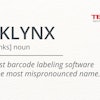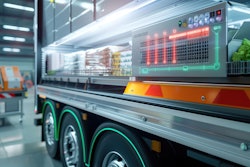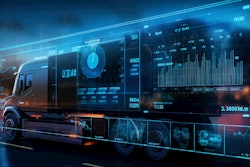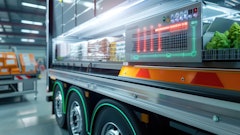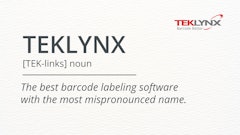
Food waste has long been grocery retail's most visible margin killer, but the path to solving it has remained unclear. Every markdown, every disposal, every item that moves from shelf to dumpster represents both lost revenue and sustainability failure. For grocery retailers operating on razor-thin margins, the challenge is no longer whether to address food waste but how to do it with precision and scale.
Artificial intelligence is at the heart of the solution. Unlike broad efficiency initiatives or blanket sustainability programs, AI-driven solutions operate in the granular details of daily store operations, analyzing patterns that human managers simply cannot track at scale.
The problem at hand
A 2024 U.N. report estimates that around one-third of all food goes to waste globally each year, over one billion tons, amounting to nearly $940 billion in economic losses annually. In the United States, the problem hits closer to home: nearly 40% of food (63 million tons) is lost or wasted each year, costing an estimated $218 billion, roughly 1.3% of the country's GDP.
For retailers specifically, the impact is direct and measurable. In an industry where net margins often sit in the low single digits, recovering even a fraction of that loss makes a material difference. According to ReFED, lost and wasted food cost the food industry $250 billion in 2019, with food service businesses bearing the greatest burden, but retailers face the same pressures daily.
Where AI makes the difference
Technology can examine historical sales data, weather forecasts, local events, promotional calendars, and real-time inventory levels to predict demand with increasing accuracy and make a lasting impact. Retailers implementing AI-powered markdown optimization report immediate, sustained waste reductions year over year, with some achieving tens of millions in direct cost savings. The systems work by dynamically adjusting markdown rates based on seasonality, demand patterns, and shopper behavior at the store level, maximizing revenue recovery while minimizing what ends up discarded.
These improvements deliver dual benefits. The obvious win is operational: less waste means better margins. The second benefit is harder to quantify but increasingly important: meeting consumer expectations around sustainability. Shoppers are more aware of food waste than ever, and they increasingly choose retailers who demonstrate environmental responsibility. AI systems help stores align operations with these values without sacrificing profitability or requiring dramatic operational overhauls.
3 key applications
The most effective AI implementations focus on specific operational challenges.
Demand forecasting has become dramatically more sophisticated. Rather than relying on simple historical averages, modern systems incorporate dozens of variables: day of week, weather patterns, nearby events, holiday timing, even social media trends. A store in a college town can adjust orders based on academic calendars. A coastal location can prepare for weather events days in advance.
Dynamic pricing and markdown optimization help stores move products before they spoil. While traditional markdown strategies rely on fixed schedules (items get marked down by set percentages at predetermined intervals), AI systems can identify which products need aggressive discounting and which can move at smaller reductions. The result: maximizing revenue recovery while minimizing waste. The timing becomes more precise, catching products in that narrow window where they're still appealing to customers but approaching their sell-by dates.
With technology, inventory management becomes proactive. AI can identify slow-moving SKUs, flag ordering patterns that consistently result in overstock, and suggest adjustments based on actual sales velocity. Some systems can even recommend which products to display more prominently and which to reduce or eliminate entirely.
Making it work
Advanced technology comes with its challenges. AI systems require clean, consistent data, which some retailers still struggle to provide. Integration with existing point-of-sale systems, inventory management platforms, and supply chain software can be complex. Store-level staff need training to trust and effectively use AI recommendations rather than defaulting to intuition or habit built over years of manual decision-making.
But as systems improve and more retailers adopt these tools, the competitive advantage shifts toward those who can execute with precision at the store level. The goal is not perfect prediction but continuous improvement: reducing waste incrementally, recovering margin steadily, and demonstrating environmental responsibility measurably.
Food waste will remain a challenge for grocery operations. The complexity of perishable inventory, the unpredictability of consumer behavior, and the realities of supply chain timing guarantee that some waste is inevitable. The good news: technology is proving effective at reducing that unavoidable waste to its practical minimum. For an industry operating on thin margins and facing growing sustainability expectations, that difference represents genuine opportunity.


